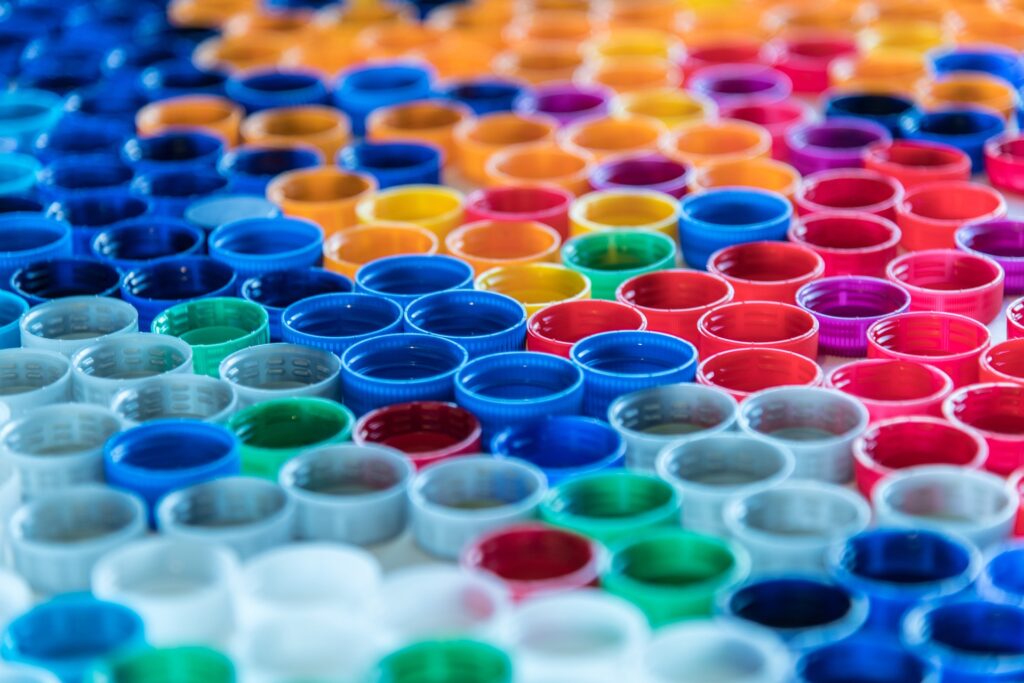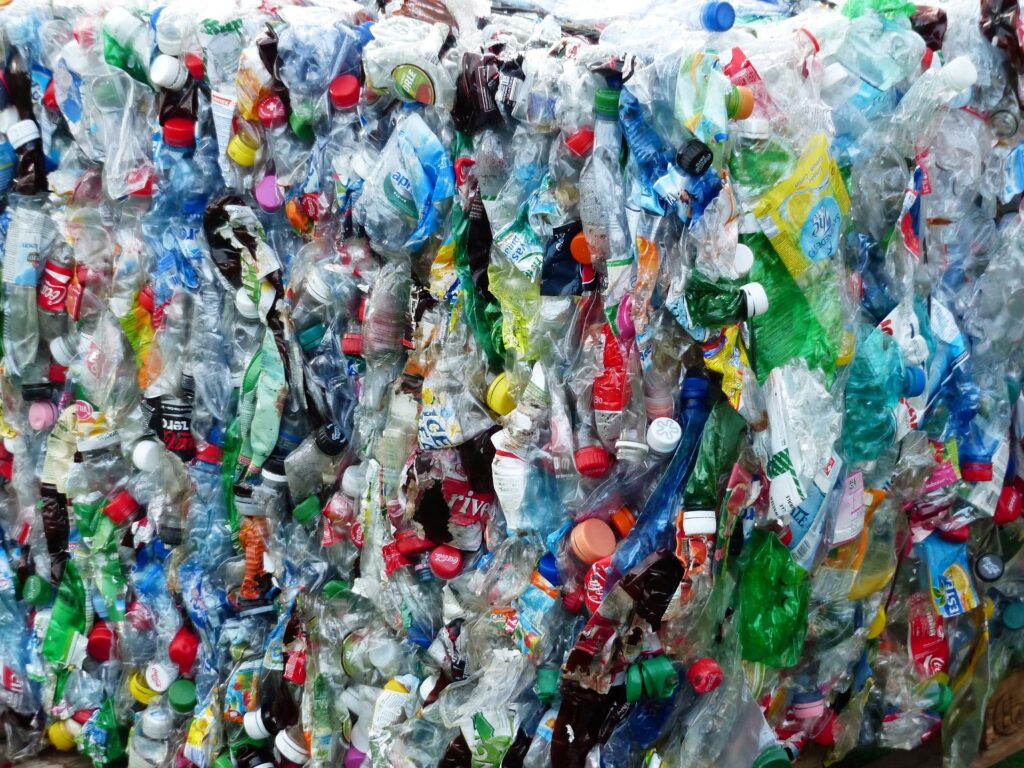Critical advances and future opportunities in upcycling of plastic waste

Image by Džoko Stach from Pixabay
Less than 20 percent of post-consumer plastic waste is currently recycled, primarily for energy recovery or through mechanical recycling into lower value materials. This article describes state-of-the-art methods for chemical upcycling of plastic waste into new polymers, molecules, or materials. It suggests complementary approaches to conventional recycling methodologies to guide academic and industrial research, and it proposes uncommon routes to reveal new feedstock potentials of plastic waste. Advantages and challenges with each recycling approach are critically discussed considering how they can contribute to realizing a sustainable plastics economy.
Authors
Coralie Jehanno, POLYMAT, University of the Basque Country UPV/EHU, Donostia–San Sebastian, Spain, and POLYKEY, Donostia-San Sebastian, Spain; Jill W. Alty, Department of Chemistry, University of North Carolina at Chapel Hill, USA; Martijn Roosen, Laboratory for Circular Process Engineering, Ghent University, Belgium; Steven De Meester, Laboratory for Circular Process Engineering, Ghent University, Belgium; Andrew P. Dove, School of Chemistry, University of Birmingham, UK; Eugene Y.-X. Chen, Department of Chemistry, Colorado State University, Fort Collins, CO, USA; Frank A. Leibfarth, Department of Chemistry, University of North Carolina at Chapel Hill, USA; Haritz Sardon, POLYMAT, University of the Basque Country UPV/EHU, Donostia–San Sebastian, Spain
Highlights
- The article describes three main categories of upcycling: 1) Polymer-to-polymer, 2) Polymer-to-molecule, and 3) Polymer-to-materials.
- The authors compare the environmental footprint of upcycling alternatives to that of substituting plastic products made from virgin materials through a life-cycle analysis perspective.
- Polymer upcycling is in its infancy and faces considerable challenges before it will be suited for widescale industrial applications.
- Incorporating aspects of material performance, sustainability metrics, material flow analysis and market volumes of the upcycled product earlier in the research pipeline is critical for sustainable development of recycling in general and upcycling more specifically.
- Upcycling not only allows for extending the useful lifetime of plastic, but it also shows potential to transform plastic waste into value-added materials with built-in recyclability for closed-loop upcycling
“The multifaceted challenges that need to be solved to advance a sustainable plastics economy are daunting in their scale and complexity”
RESEARCH BRIEF
The challenge: Recycling techniques that don’t ‘downcycle’ the material qualities
Advances in end-of-life treatments for plastics have not kept pace with the growth rate in plastics production. To decrease the amount of plastic pollution as well as reducing the greenhouse gas emissions from the manufacturing of virgin plastics, there is a pressing scientific and societal challenge to reduce, reuse and recycle plastic waste.
The majority of plastic waste is currently landfilled or incinerated, although large-scale recycling of plastics has been practiced over the past 30 years in Western countries. The potential in sorting of plastic waste is limited due to additives, contaminants, and multilayer products, which leads to mis-sorted polymers and substantially decreased material qualities for mechanically recycled products – so called ‘down-cycling’.
As an alternative to mechanical compounding, chemical recycling techniques are emerging, which break down polymers into high-purity monomers. However, only a subset of plastic waste can currently be chemically recycled in an energy-efficient and cost-effective manner.
The inherent challenge to both mechanical and chemical recycling arises in that these processes are more expensive or energy intensive than the simpler production process based on petroleum. New concepts are emerging to overcome this challenge by targeting high-value markets in the circular economy for plastics, also called ‘up-cycling’, where chemical recycling results in new polymers, molecules, and materials of similar or higher quality or functionality than its feedstock.
Upcycling strategies:
The article describes three main categories of upcycling: 1) Polymer-to-polymer, 2) Polymer-to-molecule, and 3) Polymer to materials.
- Polymer-to-polymer upcycling can be done through:a) depolymerization-repolymerization, which breaks down a polymer into its building blocks, and subsequently rebuilds them into a new polymer. The most studied example of depolymerization is on poly(ethylene terephthalate) (PET), but the authors provide several examples of the process for various plastics.b) functionalization, which is a common approach to differentiate the properties of the original plastic product by introducing new chemical groups to the polymer compound. The approach is especially attractive for vinylic polymers. There is however currently a mismatch between the larger volume of polyolefin waste available and the smaller market for these functionalized materials. If high-value markets for functional polyolefin materials can be developed, economic incentives can drive progress in polymer collection and sorting technology.
- Polymer-to-molecule upcycling involves the depolymerization of plastic waste into molecules that are different from the monomer that built the original polymer. These molecules can then be used to create new monomers, additives, or fine chemicals. Upcycling discarded plastics into molecules poses potential for high-volume substitution of synthetic chemicals that are otherwise labor intensive or costly to produce.
- The conversion of commodity polymers into new materials can be achieved through either:
a) thermal treatment to yield carbon-based materials, or through b) compatibilization to achieve polymeric blends. The resulting materials can then be used in the application of next-generation nanomaterials, energy storage and composites.Challenges with (a) thermal treatment of plastic waste to yield carbon-based materials (i.e. gasification, low-temperature carbonization or pyrolysis) is that the value of the final product is not sufficient to offset the energy required and the environmental impact of the concurrent release of greenhouse gases. Also, achieving defect-free nanomaterials will require further investigations to allow the relatively large non-pure waste streams to become a feedstock for such smaller volume applications.(b) Compatibilization is the most common approach for upcycling mixed plastic waste to create high-value blended materials that can be repeatedly reprocessed. The concept can solve the short-term challenges with sorting mixed polymers in the waste stream, but it might exacerbate the same challenge in the long term. Therefore, the promise of technology that can disentangle plastic waste mixtures into pure feedstocks would enable for both high-performance blends as well as the deconstruction of those blends into value-added feedstocks.
“Chemical upcycling of polymers holds promise for a paradigm shift from traditional ways of treating waste plastics by transforming and repurposing them into feedstocks for higher-value products.”

The inherent challenge to both mechanical and chemical recycling arises in that these processes are more expensive or energy intensive than the simpler production process based on petroleum (image by Hans from Pixabay).
Comparing the carbon footprint of three alternatives
The authors compare the environmental footprint of upcycling alternatives to that of substituting plastic products made from virgin materials through a life-cycle perspective. Three case examples were evaluated, where the carbon footprint of each case is compared with a benchmark scenario in which the plastic materials would be incinerated with energy recovery and the applications that are substituted would be fulfilled with virgin materials.
The three case examples are:
- re-polymerization of PET recyclates into fiberglass composites (i.e. ‘polymer-to-polymer’ upcycling)
- depolymerization of BPA-PC into cyclic carbonates (i.e. ’polymer-to-molecule’ upcycling), and
- sulfonation of LDPE bags (i.e. ‘polymer-to-material’ upcycling).
Assumptions were made to compensate for the scale and optimization in the relatively more mature virgin production value chains of the substituted materials. The comparison resulted in that a net benefit, in terms of lower carbon footprint, is feasible in each of the three cases.
Case 1 had the drawback of requiring many resources but had the benefit of low energy consumption and multiple recycling cycles.
Case 2 had the drawback of high energy demand but was still showing high CO2 savings thanks to avoiding the use of virgin resources.
Case 3 had low process yields, but in turn showed the benefits of low energy consumption.
However, the authors point out that assessing circular economy developments through upcycling is complex, and the limitations to life-cycle assessments must be recognized. Future developments in the life-cycle assessment of upcycling are pointed out, including the aspects like how quality affects the factor of substituting virgin materials, the lifetime of products and the recyclability of the substituted products.
Criteria for substitution:
Substitution of virgin plastic materials are suggested to be guided by three criteria:
- Environmental impact by assessing global warming potential and water demand, as well as by applying green chemistry principles such as atom efficiency, catalysis, high yields, and use of safer and less toxic/non-toxic chemicals;
- Industrial relevance in that the targeted product should substitute a product with a specific application or demonstrate desirable properties, as well as to be industrially compatible with methods and technology at industrial scale;
- Economic value in that the expected price of the product should be higher than the cost required for upcycling as well as being price competitive to similar products with current technology.
The authors applied these principles to recent research to come to three broad conclusions about the current state of polymer upcycling:
Firstly, polymer upcycling is in its infancy and faces considerable challenges before it will be suited for widescale industrial application. Future research is required to understand and control the chemical mechanisms that lead to selective polymer deconstruction at a molecular level. More improvements are also needed to enhance the energy efficiency of upcycling processes, to enhance upcycling capability to produce targeted products, as well as to improve robustness to handle mixed and contaminated waste streams.
Secondly, incorporating aspects of material performance, sustainability metrics, material flow analysis and market volumes of the upcycled product earlier in the research pipeline is pointed out by the authors as critical. However, these aspects should not limit fundamental research in terms of re-imagining what is possible and to push the boundaries for future developments. As an example, small-scale upcycling may provide an economic benefit enough to offset a cost intensive recycling process – which can raise recycling levels overall in an industry where waste streams are generally dwarfing the potential substitution of virgin materials.
Third, the end-of-life of upcycled products need to be considered. Upcycling not only allows for extending the useful lifetime of plastic, but it also shows potential to transform plastic waste into value-added materials with built-in recyclability for closed-loop upcycling.
“The environmental impact of any of the discussed upcycling methods should ideally be minimized and evaluated by means of LCA or similar holistic methods and circular economy indicators.”
- The full article is available here: Critical advances and future opportunities in upcycling commodity polymers (Nature)